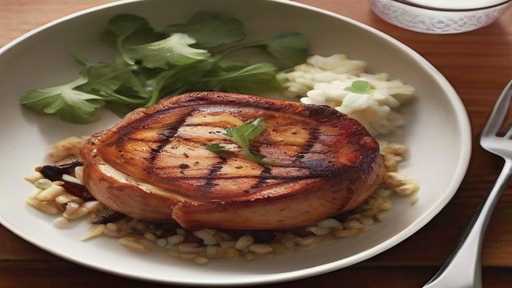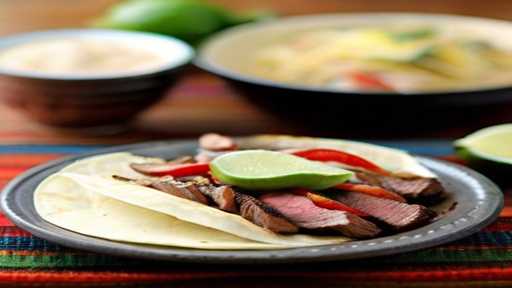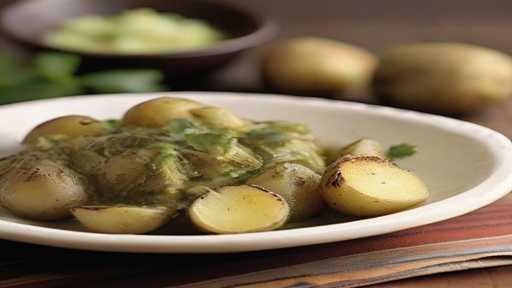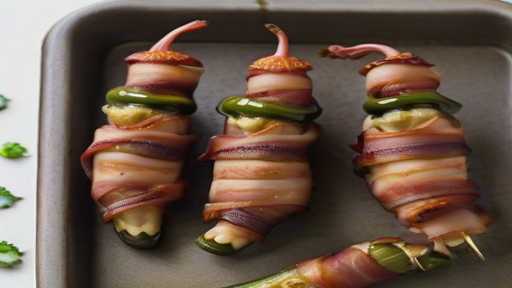Homemade Lavender Syrup Recipe
Discover the fragrant charm of homemade lavender syrup with this easy recipe. Harvested from fragrant lavender fields, this delicious blend adds a floral touch to your drinks and enriches your dining experience with its unique, comforting essence.
Table of Contents
Homemade Lavender Syrup Recipe:
Cuisine
General
Total Prep Time
20 minutes
Resting Time: 1 hour (optional)
Difficulty
Easy
Homemade Lavender syrup Recipe, as follows. :
- Ingredients:
- • 1 cup water
- • 1 cup granulated sugar
- • 2 tablespoons dried lavender buds (for cooking)
- Options:
- • 1 teaspoon lemon zest (for added citrus flavor)
- Alternatives Item:
- • Granulated sugar: Can be used in place of honey or with agave syrup for a different flavor profile.
- • Dried lavender buds: If you cannot find culinary lavender buds, you can use culinary lavender extract or lavender oil. Make sure they are food safe and suitable for consumption.
Cooking Instructions: Homemade Lavender syrup
- Preparation:
- 1. First, make sure you have all the required supplies and equipment.
- 2. Measure out 2 tablespoons of dried lavender buds.
- 3. If you haven’t already, chop the large lavender buds into small pieces to release more scent.
- Lavender Infusion:
- 4. Combine 1 cup water and 1 cup granulated sugar in a small saucepan over medium heat.
- 5. Stir the mixture until the sugar is completely dissolved.
- 6. Add dried lavender buds to the pot.
- Simmer:
- 7. Bring the mixture to a gentle simmer. Be careful not to let it boil, as the flavor will change when boiled.
- 8. Add the lavender to the syrup and simmer until fragrant, 5 to 7 minutes.
- Strain:
- 9. Remove the pot from the heat and let the lavender syrup cool for a few minutes.
- 10. Strain the syrup through a fine sieve or cheesecloth into a heatproof container to remove the lavender buds. Press gently to extract maximum flavor.
- Cooling:
- 11. Cool the lavender syrup to room temperature.
- Storage:
- 12. Once cool, transfer the lavender syrup to a clean airtight container.
- 13. You can keep the syrup in the fridge for up to two weeks.
- Tip:
- • Taste and adjust the amount of lavender. Too much may make the taste too strong.
- • Experiment with different types of lavender to experiment with different flavors.
- • Use lavender syrup in cocktails, iced tea, lemonade, or drizzled over desserts.
Kitchen tools and equipment: homemade lavender syrup
- 1. Cooking pot:
- • Used to heat and boil syrup ingredients.
- 2. Measuring cup:
- – For accurately measuring amounts of water, sugar, and lavender.
- 3. Wooden Spoon:
- • Great for stirring syrup mixture without damaging the pot.
- 4. Fine mesh sieve:
- • Used to filter lavender buds and other solids from the syrup.
- 5. Cheesecloth:
- • If you prefer, you can strain the syrup using cheesecloth instead of a fine sieve.
- 6. Glass jar or bottle:
- • For storage of lavender syrup after preparation.
- 7. Funnel:
- • Helps pour syrup into storage containers neatly and without spilling.
- 8. Lavender Buds:
- • Fresh or dried lavender buds are needed as the main ingredient to add flavor to the syrup.
- 9. Grater or Zester:
- • If you want to intensify the lavender flavor, you can add a small amount of organic lavender zest using a grater or zester.
- 10. Chef Knife:
- • Used to chop or chop additional ingredients as needed.
- 11. Sieve or Sieve:
- • Additional tool for sifting when a fine sieve or cheesecloth is not available.
- 12. Heatproof bowl:
- • Used to cool the syrup before transferring to storage container.
Pairing: Homemade Lavender syrup
- 1. Lavender Infused Lemonade
- 2. Lavender Honey Tea
- 3. Lavender Syrup Iced Coffee
- 4. Lavender Mint Sparkling Water
- 5. Lavender Simple Syrup Martini
- 6. Lavender Syrup Champagne Cocktail
- 7. Lavender Vanilla Latte
- 8. Lavender Syrup Blueberry Pancakes
- 9. Lavender Syrup Yogurt Parfait
- 10. Lavender Syrup Glazed Chicken
- 11. Lavender Syrup Sorbet
- 12. Lavender Syrup Cosmopolitan
- 13. Lavender Syrup Granola Bars
- 14. Roasted Lavender Syrup Almonds
- 15. Lavender Syrup Whipped Cream
- 16. Lavender Syrup Vinaigrette Salad Dressing
- 17. Watermelon with Lavender Syrup
- 18. Lavender Syrup Vanilla Ice Cream
- 19. Lavender Syrup Moscow Mule
- 20. Lavender Syrup Orange Blossom Mocktail
Cooking Tips for Homemade Lavender Syrup:

- 1. How to Choose the Right Lavender: When making lavender syrup, use edibles such as: Choose a lavender variety. English lavender or Provence lavender. These strains are known for their sweet, floral aroma, making them perfect for infusing into syrups.
- 2. Fresh and dried lavender: Both fresh and dried lavender can be used, but dried lavender is often more effective. If you use dried lavender, use a smaller amount than fresh flowers to avoid overpowering the flavor.
- 3. Soaking time: Pay attention to the soaking time to get the lavender flavor you like. Start by infusing for 15 to 20 minutes, and taste it halfway through. If you want a stronger flavor, increase the soaking time little by little.
- 4. Strain the syrup. After pouring, strain the syrup to remove any lavender residue. A fine sieve or cheesecloth works well to get a smooth, clear syrup.
- 5. Sweetness Level: Adjust the sweetness of the syrup to your preference. If you prefer a less sweet syrup, reduce the amount of sugar slightly. On the other hand, if you prefer a sweeter taste, add sugar.
- 6. Add citrus peel: Add a little citrus peel to enhance the lavender flavor. B.Lemon or orange. This not only enhances the floral aroma, but also adds a refreshing touch to the syrup.
- 7. Storage and Shelf Life: Store lavender syrup in a clean, airtight container in the refrigerator. Homemade syrups generally have a shorter shelf life than store-bought ones, so use them up within 2-3 weeks. Check for signs of product deterioration, such as unpleasant odors or color changes.
- 8. Creative uses: Lavender syrup is versatile and can be used for more than just sweetening drinks. Try sprinkling it on desserts, mixing it into salad dressings, or mixing it into savory dishes to create unique flavors.
- 9. Dietary changes: If you have dietary restrictions, consider using alternative sweeteners such as honey or agave syrup instead of sugar. This allows it to meet a variety of nutritional needs while retaining the essence of lavender flowers.
- 10. Allergies and sensitivities: Please be aware if you or your guests have allergies or sensitivities to flowers. Lavender is generally safe to consume, but it’s best to be aware of possible side effects and adjust recipes accordingly.
Suggestions on how to serve homemade lavender syrup:

- Presentation:
- 1. Lavender Elegance: Pour homemade lavender syrup into a clear glass jar with a tight-fitting lid. For an elegant touch, tie a sprig of fresh lavender around the neck of the bottle with a decorative ribbon.
- 2. Vintage Charm: Serve your lavender syrup in a vintage-style glass bottle or small mason jar. For an attractive presentation, add a vintage-style label with the syrup’s name.
- 3. Fun Tea Time: Pour lavender syrup into a stylish teapot and pour it over tea for your guests, or use it to sweeten your favorite hot or iced drink.
- Servings:
- 1. Lavender Lemonade: Mix lavender syrup with freshly squeezed lemon juice and cold water to make refreshing lavender lemonade. Add ice and enjoy a delicious and flavorful drink.
- 2. Lavender Latte: Add a floral touch to your favorite latte or coffee by adding lavender syrup. For an extra special touch, sprinkle with whipped cream and a pinch of dried lavender.
- 3. Drizzle on desserts: Pour lavender syrup over desserts like vanilla ice cream, panna cotta, and lemon sorbet. Floral notes bring a unique and sophisticated taste.
- Garnishes and Side Dishes:
- 1. Lavender sprigs: Garnish the serving area with fresh lavender sprigs for a fragrant and decorative touch.
- 2. Citrus slices: Place lemon or orange slices on the serving tray to enhance the floral aroma of the lavender syrup.
- 3. Shortbread Cookies: Serve lavender-infused shortbread cookies as a side dish. The delicate buttery flavor of the cookies and the floral sweetness of the syrup go perfectly together.
- 4. Cheese plate: Serve mild cheeses such as brie or goat cheese on a cheese plate. The subtle flavor of the cheese makes the lavender syrup shine.
Storage and Leftovers: Homemade Lavender Syrup Recipe:
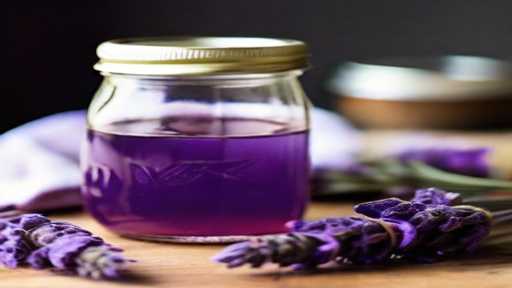
- Storage:
- 1. Refrigerate: Transfer remaining lavender syrup to a clean, airtight glass or plastic container. To preserve quality, please refrigerate immediately. The low temperature of the refrigerator prevents bacterial growth and preserves the flavor of the syrup.
- 2. Avoid light. Store containers in a dark place or use opaque containers. Light can affect the color and flavor of lavender syrup over time.
- 3. Seal tightly: Make sure the container is tightly sealed so that odors from the refrigerator do not affect the flavor of the syrup.
- Reheating Instructions:
- 1. Room temperature: Remove the syrup from the refrigerator and let it sit on the counter for about 30 minutes to come to room temperature.
- 2. Gentle heating: If the syrup remains thick, you can gently heat it on the stove. Use low to medium heat, stirring constantly to avoid burning or overcooking.
- 3. Microwave method: You can also use a microwave. Place the syrup in a microwave-safe container and heat in short intervals, stirring occasionally, until the desired consistency is reached.
- 4. Check the consistency: Note the consistency of the syrup. Once it reaches your desired thickness, remove it from the heat or microwave.
- Tips:
- 1. Avoid freezing: Lavender syrup can be refrigerated, but freezing is not recommended. Freezing changes the texture and can affect the taste.
- 2. Quality Control: Before reheating, check for signs of spoilage, such as: B. Unpleasant odor or color change. If syrup comes out or there is a strange odor, it is best to throw it away.
Nutritional Information: Homemade Lavender Syrup (per serving)
- • Calories: 60 kcal
- • Fat: 0 g
- • Protein: 0 g
- • Carbohydrates: 15 g
- • Sugar: 15 g
- • Fiber: 0 g
- Note: Nutritional information is approximate and may vary depending on the specific ingredients and amounts used in the homemade lavender syrup recipe.
Every Season: Homemade Lavender syrup
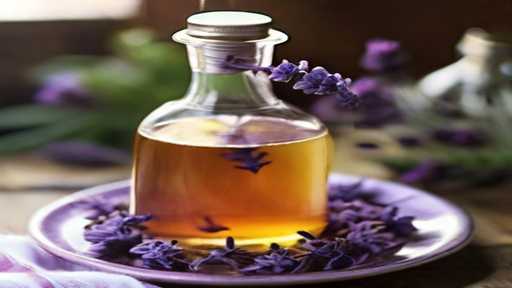
- Spring: Lavender harvest
- 1. Harvest fresh lavender flowers in the spring when lavender blooms. Choose flowers that are fully open but have not yet begun to wilt.
- 2. Gently wash the lavender flowers in cold water to remove dirt and insects. Using a fresh cloth or paper towel, pat dry.
- 3. In a saucepan, mix 2 cups of water and 1 cup of fresh lavender flowers. Bring to a boil over medium heat and simmer for 10 minutes to infuse the lavender scent into the water.
- 4. Strain the lavender-infused water to remove the flowers, leaving behind the lavender-infused liquid.
- 5. Return the lavender-infused water to the pot and add 2 cups of granulated sugar. Stir over medium heat until sugar is completely dissolved.
- 6. Once the sugar has dissolved, add 1 tablespoon of lemon juice to lighten the taste. Stir well and let the syrup cool.
- 7. Pour the cooled lavender syrup into a sterile glass jar or jar. Store in the refrigerator for up to 30 days.
- Summer: Refreshing Lavender Lemonade
- 1.During the hot summer months, use lavender syrup to make a refreshing lavender lemonade. Mix 2 tablespoons of lavender syrup with 1 cup of cold water and 1 squeeze of fresh lemon juice.
- 2. Garnish with fresh lavender sprigs and lemon. Add ice cubes for extra chill.
- 3. Enjoy homemade lavender lemonade on a hot summer day.
- Autumn: Lavender Dessert
- 1. When fall arrives, add lavender syrup to your desserts. For a touch of floral sweetness, drizzle the syrup on vanilla ice cream, yogurt, or even pancakes.
- 2. Mix lavender syrup into baked goods. Add to cake or cupcake batter to add a unique twist to classic desserts.
- 3. Discover new ways to enjoy syrup by trying our lavender-flavored fall treats.
- Winter: Lavender Hot Drink
- 1. Make a soothing lavender hot drink during the winter months. Add 1 tablespoon of lavender syrup to your favorite hot tea or coffee.
- 2. Make hot chocolate with lavender by stirring syrup into warm milk and adding cocoa powder.
- 3. Curl up under a blanket and enjoy the soothing scent of lavender in this winter drink.
Variations: Homemade Lavender syrup
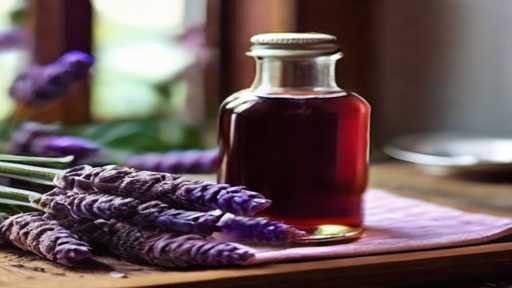
- 1. Citrus Twist:
- • Add 1 tablespoon of freshly squeezed lemon or orange juice to refine lavender syrup with a hint of citrus.
- 2. Mint Fresh:
- • Give your lavender syrup a refreshing touch by adding a handful of fresh mint leaves during cooking.
- 3. Honey Lavender Fusion:
- • Replacing some of the sugar with honey creates a unique flavor combination of the sweet floral notes of lavender and the rich sweetness of honey.
- 4. Vanilla Lavender Elixir:
- • Mix 1 teaspoon of pure vanilla extract into chilled lavender syrup to add a touch of warmth.
- 5. Berry Bliss:
- • Stir in a handful of crushed berries, such as raspberries or blackberries, for a fruity deliciousness.
- 6. Ginger Ging:
- • Add spice by boiling a few slices of fresh ginger with lavender for a subtle, spicy flavor.
- 7. Rosewater Infusion:
- • Create a delicate floral symphony by combining a teaspoon of rosewater with lavender syrup.
- 8. Cardamom Dream:
- • Enhance the exotic flavor by adding a pinch of ground cardamom to the syrup during the cooking process.
- 9. Chamomile Sedative:
- • Adding chamomile tea bags to the lavender syrup mixture while boiling increases its relaxing effects.
- 10. Coconut Lavender Paradise:
- • Transport your taste buds to a tropical oasis by mixing in 2 tablespoons of coconut milk or coconut cream.
- 11. Cinnamon Spice Delight:
- • Add a pinch of ground cinnamon to lavender syrup to create a soothing blend of aromas and enjoy the warmth.
- 12. Maple Lavender Drizzle:
- • Adds an even sweeter, earthier flavor to traditional lavender syrup by replacing sugar with maple syrup.
- 13. Peach Keen Infusion:
- • Enhance the fruity aroma by blending pureed peaches or adding a few peach slices to the lavender syrup.
- 14. Almond Blossom Elegance:
- • Add 1 teaspoon of almond extract for a nutty flavor that complements the floral lavender essence.
- 15. Spicy Jalapeno Surprise:
- • Infuse the lavender syrup with fresh jalapeno slices during cooking for a surprising kick.
- 16. Earl Gray Lavender Fusion:
- • Add a touch of sophistication to a few bags of Earl Gray tea by steeping them in lavender syrup after they have cooled.
- 17. Pomegranate Jewel Twist:
- • Add pomegranate juice to the lavender syrup mixture to increase its antioxidant content.
- 18. Apple Cinnamon Orchard Delight:
- • Get the essence of fall by adding diced apples and a pinch of cinnamon to lavender syrup.
- 19. Chocolate Lavender Treat:
- • Add a rich touch by melting a few pieces of dark chocolate in lavender syrup for a decadent treat.
- 20. Cucumber Melon Refresher:
- • Finely chopped cucumber and melon are added to lavender syrup for a light and refreshing taste.
Recipe Notes: Homemade Lavender Syrup

- Ingredients:
- 1. Lavender Flowers: For the best flavor, use culinary grade dried lavender flowers. You can also use fresh lavender, but make sure it is pesticide-free.
- 2. Sugar: Choose high-quality granulated sugar for a refreshing sweetness.
- 3. Water: Use filtered water to avoid impurities that will affect the flavor of the syrup.
- 4. Lemon juice (optional): A squeeze of lemon juice brightens the syrup and brings out its floral aroma.
- Recipe:
- 1. Correct dosage of lavender: Be careful not to add too much lavender to the syrup. Start with about 1/4 cup of dried lavender flowers per cup of water. Please adjust to your taste.
- 2. Soaking time: Soak lavender in simple syrup for approximately 15-20 minutes. Be careful not to soak for too long as it will taste bitter.
- 3. Strain: Strain the syrup using a fine sieve or cheesecloth to remove any lavender particles. Strain it several times to get a clear syrup.
- 4. Lemon juice: If using lemon juice, add it after straining the lavender. Start with 1 teaspoon and adjust to your desired amount. Lemons not only add flavor, but also help preserve the syrup.
- 5. Storage: Store the lavender syrup in a glass bottle in the refrigerator. It has a month-long shelf life if stored correctly.
- Additional Findings:
- 1. Culinary Versatility: Lavender syrup can be used in a variety of culinary applications. In addition to adding it to drinks such as soda, tea, and cocktails, it can be drizzled over desserts and pancakes, and can also be used as a sweetener in salad dressings.
- 2. Cultural Significance: Lavender has a rich cultural history and symbolizes peace and relaxation. Its culinary uses date back centuries, and the syrup can be used to evoke a sense of nostalgia or to create modern, innovative dishes.
- 3. A personal touch: Experiment by infusing your lavender syrup with other herbs and spices, like mint or vanilla, to create a customized flavor profile.
- 4. Gift: Homemade lavender syrup is a thoughtful and unique gift. Pack it into a decorative bottle and share the joy of this fragrant creation with friends and family.
FAQ:
FAQ 1: How do I make homemade lavender syrup?
- Q: What ingredients do I need?
- A: You’ll need water, sugar, fresh or dried lavender flowers, and optional lemon zest.
- Q: How long will syrup last?
- Answer: It will last for about two weeks if stored in the refrigerator.
FAQ 2: Can I change the recipe for lavender syrup?
- Q: Can I adjust the sweetness?
- A: Yes, you can change the sugar content to suit your tastes.
- Q: Are there any alternative uses for lavender syrup?
- A: Of course! Add it to cocktails, soda, or drizzle over desserts for a unique floral flavor.
In summary, making homemade lavender syrup infuses simple syrup with fragrant lavender flowers, adding a delicious and versatile accent to your dishes. This easy-to-follow recipe promises a sweet floral essence that will add a homemade charm to both drinks and desserts.

